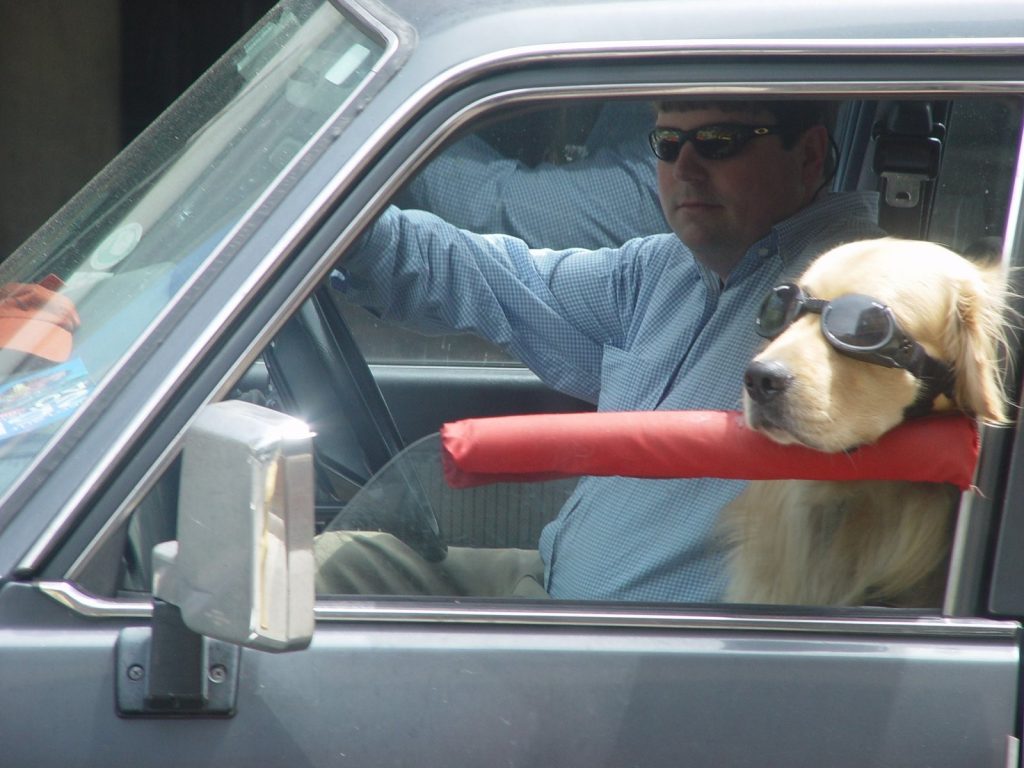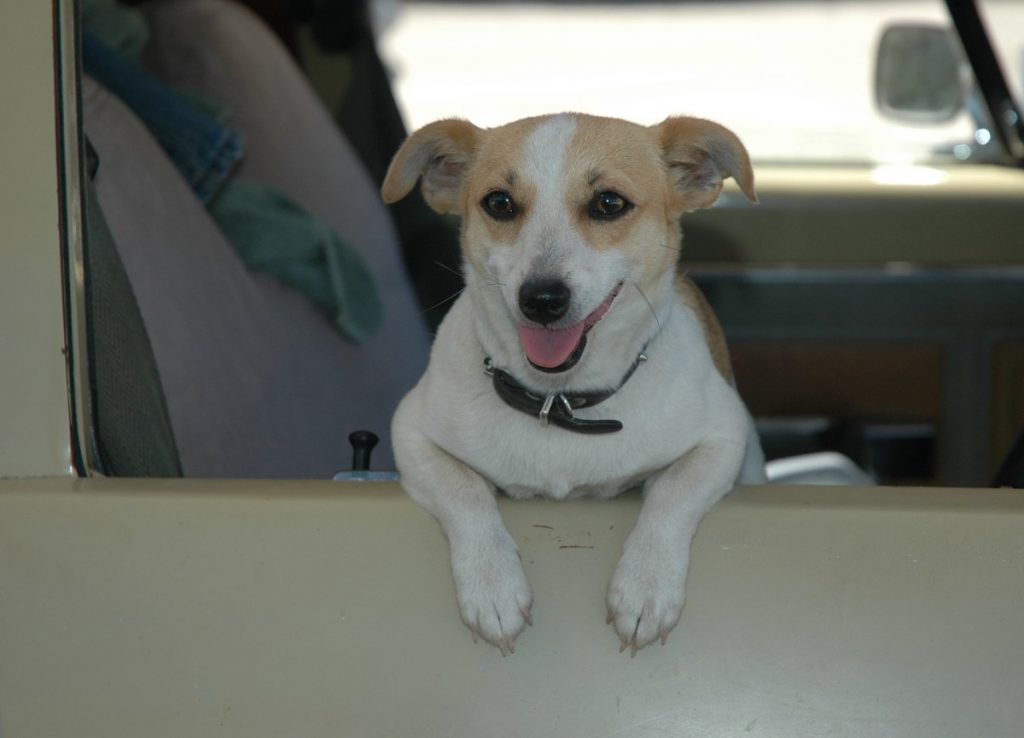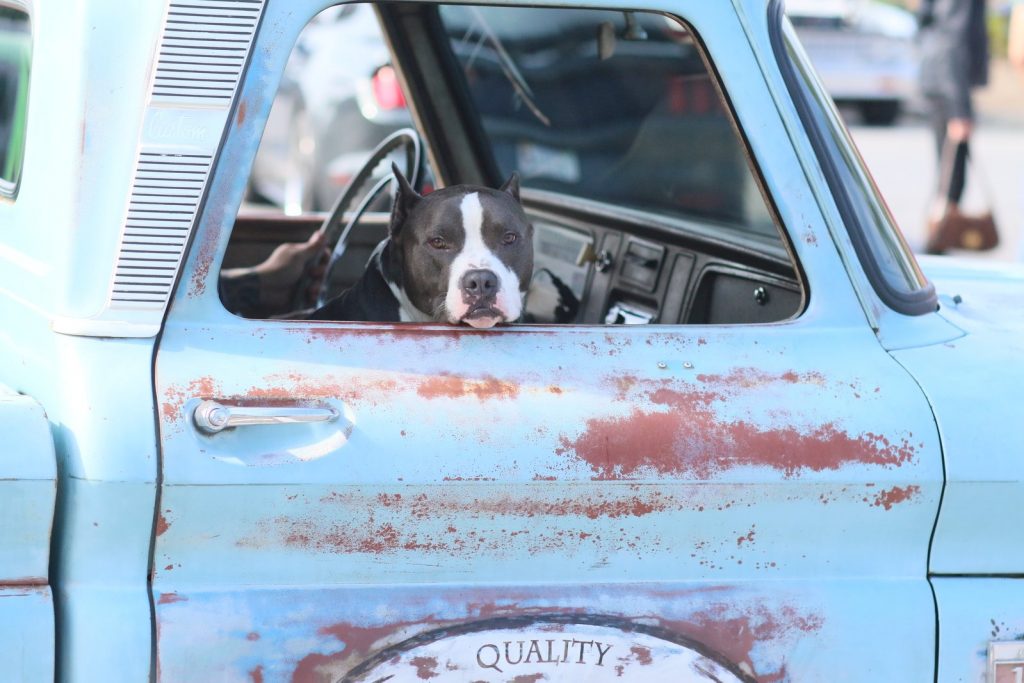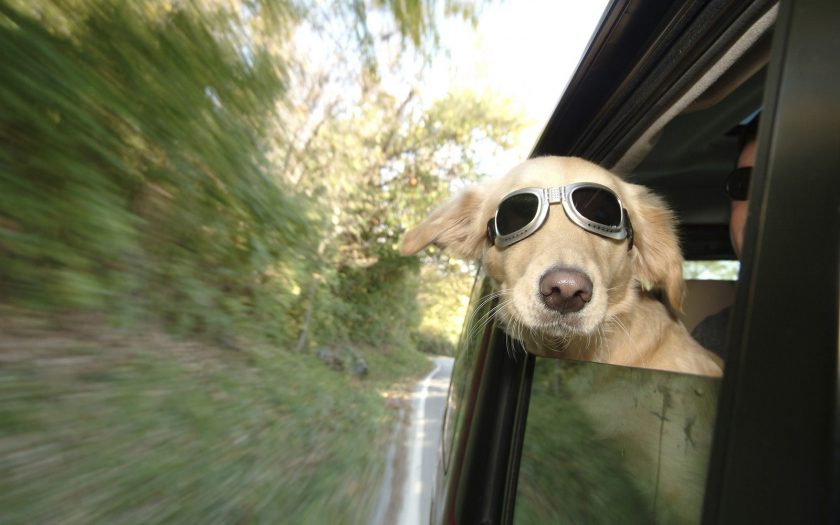THE TOYOTA ROAD RULES quiz highlighted an area of some confusion regarding dogs in cars.
Apparently, 64 percent of respondents thought it was allowable to have a dog sit on your lap while driving (some thought it was allowable if the dog was restrained within the driver’s seat belt while some others thought it was okay where the speed limit is under 50km/h).
As is too often the case, rules regarding dogs in cars vary from state to state, but here’s what we’ve been able to ascertain.
The first thing to understand is that any unrestrained object in a moving vehicle is potentially lethal in a collision, and that includes dogs.
A dog sitting in your lap while you are driving can interfere with your ability to steer, indicate or even see the road ahead. Should you be involved in an incident where the airbag deploys, your dog could be seriously injured, and the airbag won’t be able to fulfil its primary function of protecting you.
Dogs travelling in the tray of a utility may accidentally fall from the vehicle or be violently ejected if the vehicle is involved in a collision.
Should an unrestrained animal contribute to a crash, there is a real risk that your insurer will refuse to pay up.
So whatever the rules where you live, restraining your dog in the car is good practice, especially since nearly 5000 dogs either die or are severely injured each year in road vehicle incidents (RSPCA figures) including falling from a moving vehicle, being struck by oncoming or passing vehicles, being dragged alongside moving vehicles and attempting to jump from moving vehicles.
Rules were introduced in 2013 that prohibit a pet being in the driver’s area of a vehicle. A motorcyclist must not ride with an animal between the handlebars and the rider. Animals should be seated or housed within a suitable area of the vehicle. Dogs in ute trays should be restrained by a tether or within a cage. A driver, motorcycle rider or passenger must not lead an animal while the vehicle is moving.

State by state.
In NSW, you are obliged to make sure your pet is secure when travelling in a motor vehicle. You can be fined and lose demerit points for having a dog in your lap when driving (you, not the dog!). The fine is $338, rising to $561 in a school zone and three demerit points. If an unrestrained dog (including in a ute) is injured, the fine is up to $400 and a possible jail sentence. Under the Prevention of Cruelty to Animals Act, if an animal is injured because it was unrestrained, the owner can face up to six months in jail or a maximum fine of $5500. One source we uncovered claims that the maximum penalty is as much as $2200 should you elect to fight the matter in court. As an aside, the issue of dogs in boats is unclear … since all occupants must wear a PFD (personal flotation device, or lifejacket) it is problematical whether an animal is legally “an occupant”.
In Victoria, the rule is that you must not carry a dog on your lap when driving. This incurs a fine of up to $400. There is no law that a dog must be secured in a vehicle. There is, however, a law that you must not transport cats in the boot of your car! Unrestrained dogs in the back of a ute come under the unsecured load rules and will incur a $433 fine. Victoria also requires that the animal is provided with its essential needs including food, water and protection from heat or cold. It is illegal to put dogs in the boot of a sedan and they must travel behind a cargo barrier in a station wagon or SUV. Containers must have multiple ventilation holes on at least three sides.

In Queensland, you must not have an animal on the driver’s lap. The penalty is $311. Similarly, un unrestrained animal in a vehicle may be deemed a distraction and incur the same $311 penalty. If the breach is serious enough, it may be considered as Dangerous Operation of a Vehicle. Unrestrained animals in a ute are considered as an insecure load, the fine for which is $243. Queensland police may investigate if an offence has been committed under the Animal Care and Protection Act 2001, leading the criminal charges and a court appearance.
In SA, Section 297 requires a driver to have proper control of a vehicle and a clear and unobstructed view of the road and traffic ahead, behind and to each side of the driver. The penalty for non-compliance is $176 but no loss of demerit points. Dogs in ute trays are covered by the Dog and Cat Management Act 1995 that requires an enclosure or restraint that will prevent the animal from falling or escaping.
In WA, there is no legislation specifically relating to transporting a pet, but under the Animal Welfare Act 2002, you are prohibited from transporting an animal in a way likely to cause it harm or is inappropriate to the animal’s welfare. Rules like this are of significant importance. Fines of up to $400 apply to owners of unrestrained dogs, including in the rear of a ute. Under the Prevention of Cruelty to Animals Act, if an animal is injured because it was not restrained in a motor vehicle, the owner can face up to six months in jail or a fine of up to $5500.
In Tasmania, the rule is substantially the same as in South Australia, but the penalty is 10 penalty units, a fine of $1540 but no loss of demerit points. The Dog Control Act 2000 requires a person in charge of a dog on or in a vehicle to restrict the animal sufficiently to prevent the dog from leaving the vehicle.
In the Northern Territory, the rules require drivers to have proper control of a vehicle, not drive with an animal on their lap, and to have a clear, unobstructed view of the road and traffic ahead, behind and to each side. Failure to do so attracts a maxim of 20 penalty units or six months imprisonment. The latest information we could find suggests one penalty unit is $154. The Animal Welfare Ac t prohibits the transport of a dog in a vehicle unless it is restrained or enclosed in a way that prevents it from falling from the vehicle.
In the ACT, your guess is as good as ours. After a fruitless hour or so wading through the ACT Access Canberra website, we couldn’t find anything about travelling with animals in vehicles.
All of these penalties and fines may or may not be correct. Despite the best efforts of seniordriveraus, finding up-to-date and definitive information is nigh-on impossible. However, in most states, having an unrestrained dog in your car or sitting in the lap of the driver will incur a fine of at least $200 and the loss of demerit points. Irrespective of any legal requirements, having your pet restrained in a vehicle is good practice for both you, other occupants and the pet.

What’s the best way to restrain your dog?
Responsible dog owners will want to restrain their pets in vehicles for the pet’s and their own protection. A car harness that secures your dog to the seat belt system or to a seat belt attachment is a simple and inexpensive option.
Make sure you measure your dog correctly and buy a harness suited to the size and weight of your dog. Remember that even in a harness, your dog should not travel in the front seat because of the danger to it should an airbag deploy.
Attach the restraint to a good harness, rather than the dog’s collar.
To protect your upholstery, you can buy a hammock-style seat cover that also restricts access to the front seats. For maximum protection, you can use this with the harness and seat belt attachment.
Carrying your dog in the cargo area of an SUV or station wagon is a good option, especially if your dog is large. The best option is to install a cargo barrier between the cargo area and the passenger cabin. Make sure your pet has sufficient room to sit, stand, turn around and lie down comfortably. Also ensure there is plenty of ventilation and airflow.
Smaller dog and cats are best transported in pet baskets or you can place them in pet booster seats.
The information contained in this article is for general information purposes only. The information is provided by seniordriveraus.com and while we endeavour to keep the information up to date and correct, we make no representations or warranties of any kind, express or implied, about the completeness, accuracy, reliability, suitability or availability with respect to the website or the information, products, services, or related graphics contained on the website for any purpose. Any reliance you place on such information is therefore strictly at your own risk and we recommend seeking legal advice.
